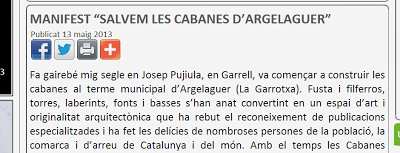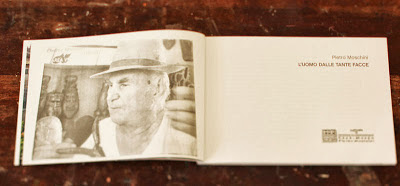
unknown photographer (picture made available
by Zangrossi's daughter to the Allogi Barbario weblog )
Venice has a lot of creative and artistic constructs which are admired by people from all over the world.
It also once had a site that was very loved and admired by the locals: the casa delle girandole, the house with the pinweels.
Life and work
Up to now little has been published on the internet about Donato Zangrossi (1905 - 1992), the man who has decorated the exterior of his house in the Campo Castelforte quarter of Venice with small colored wooden items and a large number of sefl-constructed colorful pinwheels.
He probably has begun decorating the facade in the sixties, untill in the eighties the exterior had become fully equipped with his self-constructed wooden items and pinwheels.
example of small wooden items in the decoration
After Zangrossi had died, in 1992, the decorations have no longer been cared for. The following picture, a screenprint from a 1995 video (see documentation), shows the facade as it was quite soon after its author had passed away.
Growing interest
Recently, in relation with the Italian costruttori di babele project, interest in Zangrossi's creation and comparable ones in the Veneto region has increased.
Giada Carraro, correspondent of the project, already wrote a thesis about the site, is active in collecting information and documentation about it and in general promotes interest in arte irregolari, inter alia by organizing conferences, such as one about the Casa Bepi Suá on Burano (end may 2013).

Documentation
* Article (april 6, 2013) in a local newspaper La Nuova (in italian)
* Article (april 7, 2013) in another local newspaper, about the costruttori di babele project (in italian)
* Video "Il nonno bambino",1995, Acadamy of Fine Arts, Venice (two students researching the site)
Donato Zangrossi
Casa delle girandole
Rio Frescada
Campo Castelforte
Venezia, IT
no longer extant




























































